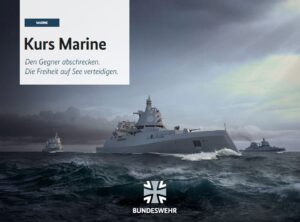
When naval inspector Vice Admiral Jan Kaack presents a perfectly styled document a few days after the new and old Minister Pistorius takes office, it is clear that this is not something that can be produced within a week. This crystal-clear brochure has been waiting to be the first indirect military policy statement from Boris Pistorius, agreed with the Inspector General, after his second oath of office. Today, the Inspector General invited a small group of selected journalists on a "city tour of the sea". He essentially presented the content of the new "Marine Course", after which he answered critical background questions from those present, some of whom were already familiar with the subject. The discussion centred on Russian aggression in the Baltic Sea, intrusions into Bundeswehr territory and, in particular, the focus of the Navy's work. There are three central questions: threat, operational area and time. The latter is the biggest challenge, ahead of procurement and personnel.
As Jan Kaack said today on the VIP launch "Marine 1" in Berlin, it became clear: the Marine 2025 course is more than just a strategy paper. It is a realistic push towards a combat-ready navy. A clear claim. We are under threat, we must prepare ourselves, we must be able to fight. Deter so that we don't have to fight. That was the case during the Cold War. And successful! Have you forgotten? Naval inspector Jan Kaack knows this better than many in Berlin's political circles, because he was once a lieutenant on the bridge of a combat-ready and weaponised speedboat of the then German Navy in the Baltic Sea during the Cold War. He knows how to give an aggressive opponent a clear warning. The navy remembers: to look the enemy in the eye. On the water and in the air. Suddenly the same applies again: if you attack us, we will hurt you. Not again. Society doesn't want this to be true everywhere, but Minister Pistorius does. Kaack presented what ministers used to reserve for themselves with media fever. But showtime is over, this year those in charge are allowed to say what's what. And they have to. Germany pays them to do so. Even if not everyone finds it comfortable.
New course
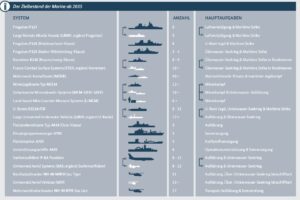
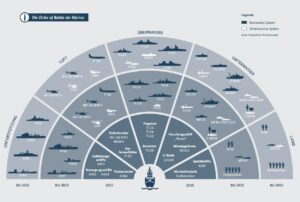 With its "Naval Course 2025", the German Navy is transforming its target vision from 2023. The now slightly static "turning point" has been dynamically developed further. The document, which was presented today in Berlin on 14 May, is astonishingly clear: deterrence on NATO's northern flank, rapid operational readiness by 2029 and a technological transformation by 2035. At the same time, it addresses gaps in ammunition, personnel and unmanned systems. The aim is to be combat-ready by 2029. Innovative anyway. To this end, the inspector gave several examples of how they have moved from testing to procurement, be it with Iris-T or underwater drones. Anything faster than the normal way is "the speed of light", as the Vice Admiral calls it.
With its "Naval Course 2025", the German Navy is transforming its target vision from 2023. The now slightly static "turning point" has been dynamically developed further. The document, which was presented today in Berlin on 14 May, is astonishingly clear: deterrence on NATO's northern flank, rapid operational readiness by 2029 and a technological transformation by 2035. At the same time, it addresses gaps in ammunition, personnel and unmanned systems. The aim is to be combat-ready by 2029. Innovative anyway. To this end, the inspector gave several examples of how they have moved from testing to procurement, be it with Iris-T or underwater drones. Anything faster than the normal way is "the speed of light", as the Vice Admiral calls it.
Northern flank in front of global presence - Navy as expert carrier
While the previous target image included global engagement - the inspector always spoke of "globally committed, locally rooted" - the 2025 course focuses on national and alliance defence. Today, NATO's northern flank is the combat scenario for the navy - from the GIUK Gap (Greenland, Iceland and the United Kingdom) across the North Sea to the Gulf of Finland. This also means that foreign deployments only take place when resources, i.e. ships, are available. This indirectly answers the question of whether a frigate or even a unit will still be operating in the Indo-Pacific in 2027: RIMPAC 2026 may take place without the Germans. The increase in hybrid threats, such as sabotage of submarine cables or pipelines, is mentioned and the role of the navy as a national "expert carrier" for the protection of critical infrastructure is asserted. The concept is a consequence of the Russian threat. The topic of the "shadow fleet" was also addressed. If requested, the navy would also provide assistance in this area.
The consistent development of unmanned capabilities is clear. Future Combat Surface Systems (FCSS), Large Remote Multi-purpose Vessels (LRMV), Large Uncrewed Underwater Vehicles (LUUV) and VTOL-UAV (Vertical Take-Off and Landing Unmanned Aerial Vehicle) are no longer a vision, but an intended reality. The guiding principle is: 'Every unit a drone carrier'. Unmanned systems are to be used to achieve endurance and effectiveness. The navy, of all organisations, is learning from the land-based war against Ukraine. The head of the navy doesn't have much choice, as none of the planned frigates, tenders and other necessary modernisations will be ready by 2029. He must concentrate on what is feasible until a conceivable Russian offensive against NATO.
Not more, but smarter
Compared to the 2035+ target picture, the 2025 course confirms the main platform figures: 15 to 16 frigates, six to nine corvettes, nine to 12 submarines, eight maritime patrol vessels and 48 naval helicopters. New additions include over 40 multi-purpose combat boats to support the naval infantry and over 60 unmanned sea and air systems. The navy is not growing through new combat ships, but through flexible, partly autonomous combat equipment. There is no other way, because large units need personnel. And against the backdrop of the shortage and little clear prospect of cancelling the suspension of compulsory military service, the inspector has no other choice here either.
Ammunition and infrastructure - the backbone of operational capability
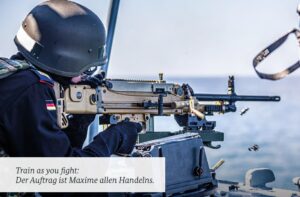
A tricky topic is once again prioritised in the 2025 course: ammunition. Jan Kaack is calling for this with vigour, because a fleet cannot manage without sufficient stocks of ammunition. The closure of naval bases is a thing of the past, because Kaack is backed by the new Foreign Minister Wadephul, who is calling for the Bundeswehr infrastructure to be strengthened, particularly in Schleswig-Holstein.
Personnel is a critical factor
New technology is only as good as the people who operate it. It is not unlikely that the navy will also have to assert itself within the Bundeswehr: like all TSK, it has no personnel responsibility of its own. The Federal Office of Personnel Management in Cologne must focus its efforts to recruit new recruits on the needs and specifications of the Navy. Simply recruiting lots of people in order to have lots of servicemen and women is not enough. Not only the navy, but the entire Bundeswehr needs bright minds. Let's hope that the process-loving office can adapt even more in this respect. Initial effects give hope. These include the considerations regarding compulsory military service. Kaack assures us that we are preparing for this in terms of ideas and personnel and must do so. But it will take a while, and the biggest critical factor for Kaack is time.
Closely linked to this: training. War equipment requires intensive training. The 2025 course clearly prioritises this: realistic training takes precedence over deployment abroad. The navy is focussing on wargaming and OPEX - but deployment obligations still exist. This cannot continue. This is why Jan Kaack is signalling to politicians by sending non-combat units to the Adriatic that this does not fit in with his concept and - quite rightly - should not.
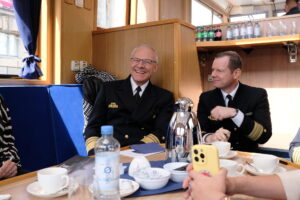 A minimised and often belittled navy is the key part of the northern flank. Without the maritime security of the German hub, there can be no national and alliance defence. Every branch of the armed forces, whether army, air force or cyber, has its role to play. The traditional jealous battle between the armed forces for resources is over, there is enough money. The fight for Germany is the priority.
A minimised and often belittled navy is the key part of the northern flank. Without the maritime security of the German hub, there can be no national and alliance defence. Every branch of the armed forces, whether army, air force or cyber, has its role to play. The traditional jealous battle between the armed forces for resources is over, there is enough money. The fight for Germany is the priority.
The inspector assured those present that the next Navy Talks would certainly take place and why not in Rostock on a seagoing unit? We are happy to be there, a great format in difficult times, even if many questions remain unanswered.
Download the document here:
Text: Schlüter / Mergener
Photo launch: hsc
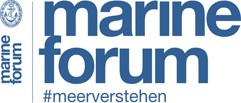
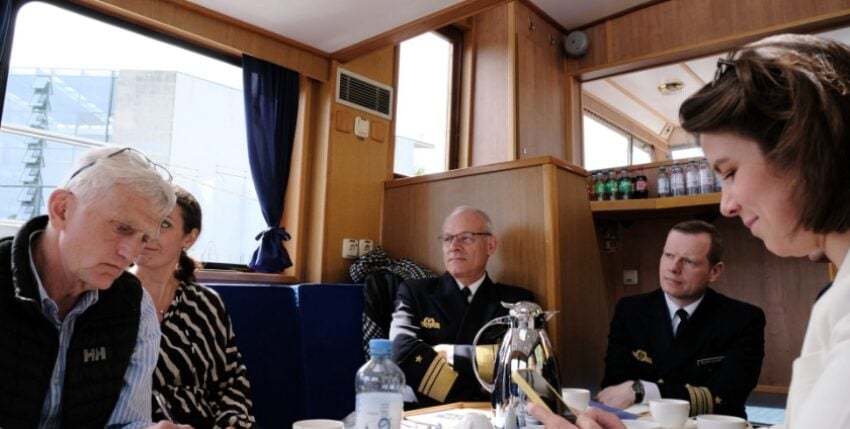






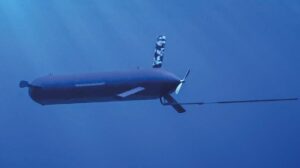

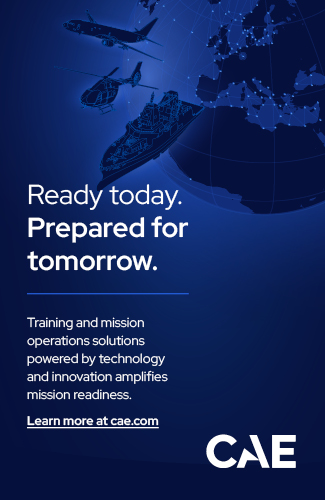

2 responses
Moin,
I don't know how to paraphrase it, but "Large Remote Multi-purpose Vessels" is wrong, as LRMV is referred to as "Large Remote Missile Vessels" in the original PDF dated 14 May 2025.
From the article:
"Future Combat Surface Systems (FCSS), Large Remote Multi-purpose Vessels (LRMV), Large Uncrewed Underwater Vehicles (LUUV) and VTOL-UAV (Vertical Take-Off and Landing Unmanned Aerial Vehicle) are no longer a vision, but an intended reality."
Nevertheless, I am curious to see how the LRMV will be organised and what the focus will be.
Best regards, TTM
Moin,
I don't know how to paraphrase it, but "Large Remote Multi-purpose Vessels" is wrong, as LRMV is referred to as "Large Remote Missile Vessels" in the original PDF dated 14 May 2025.
From the article:
"Future Combat Surface Systems (FCSS), Large Remote Multi-purpose Vessels (LRMV), Large Uncrewed Underwater Vehicles (LUUV) and VTOL-UAV (Vertical Take-Off and Landing Unmanned Aerial Vehicle) are no longer a vision, but an intended reality."
Nevertheless, I am curious to see how the LRMV will be organised and what the focus will be.
Best regards, TTM